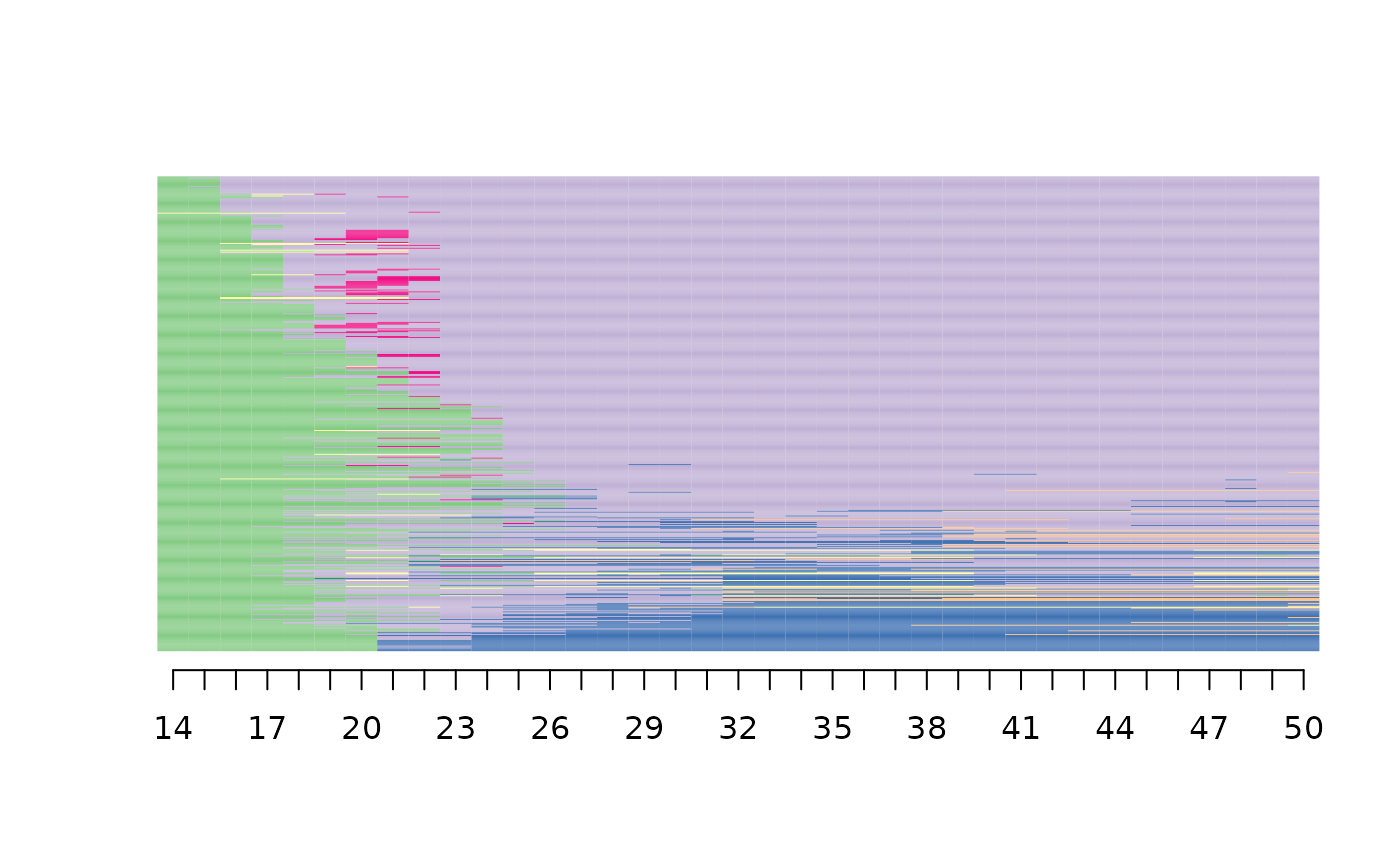Smoothing sequence data
seqsmooth.RdSmoothing of sequence data, using for each sequence the medoid of the sequences in its neighborhood. The results can be used to get a smoothed index plot.
seqsmooth(seqdata, diss, k=20, r=NULL)Arguments
- seqdata
a sequence object (see
seqdeffunction).- diss
a dissimilarity matrix, giving the pairwise distances between sequences.
- k
size of the neighborhood. Default is 20.
- r
radius of the neighborhood. If NULL (default), the radius is not used for smoothing.
Value
A list with the following elements:
- seqdata
a sequence object (see
seqdeffunction)- R2
pseudo-R2 measure of the goodness of fit of the smoothing
- S2
stress measure of the goodness of fit of the smoothing
References
Piccarreta R. (2012). Graphical and Smoothing Techniques for Sequence Analysis, Sociological Methods and Research, Vol. 41(2), 362-380.
Examples
data(trajact)
seqact <- seqdef(trajact)
#> [>] 6 distinct states appear in the data:
#> 1 = 1
#> 2 = 2
#> 3 = 3
#> 4 = 4
#> 5 = 5
#> 6 = 6
#> [>] state coding:
#> [alphabet] [label] [long label]
#> 1 1 1 1
#> 2 2 2 2
#> 3 3 3 3
#> 4 4 4 4
#> 5 5 5 5
#> 6 6 6 6
#> [>] 500 sequences in the data set
#> [>] min/max sequence length: 37/37
dissim <- seqdist(seqact, method="LCS")
#> [>] 500 sequences with 6 distinct states
#> [>] creating a 'sm' with a substitution cost of 2
#> [>] creating 6x6 substitution-cost matrix using 2 as constant value
#> [>] 377 distinct sequences
#> [>] min/max sequence lengths: 37/37
#> [>] computing distances using the LCS metric
#> [>] elapsed time: 0.584 secs
mds <- cmdscale(dissim, k=1)
smoothed <- seqsmooth(seqact, dissim, k=30)$seqdata
seqIplot(smoothed, sortv=mds, xtlab=14:50, with.legend=FALSE, yaxis=FALSE, ylab=NA)
